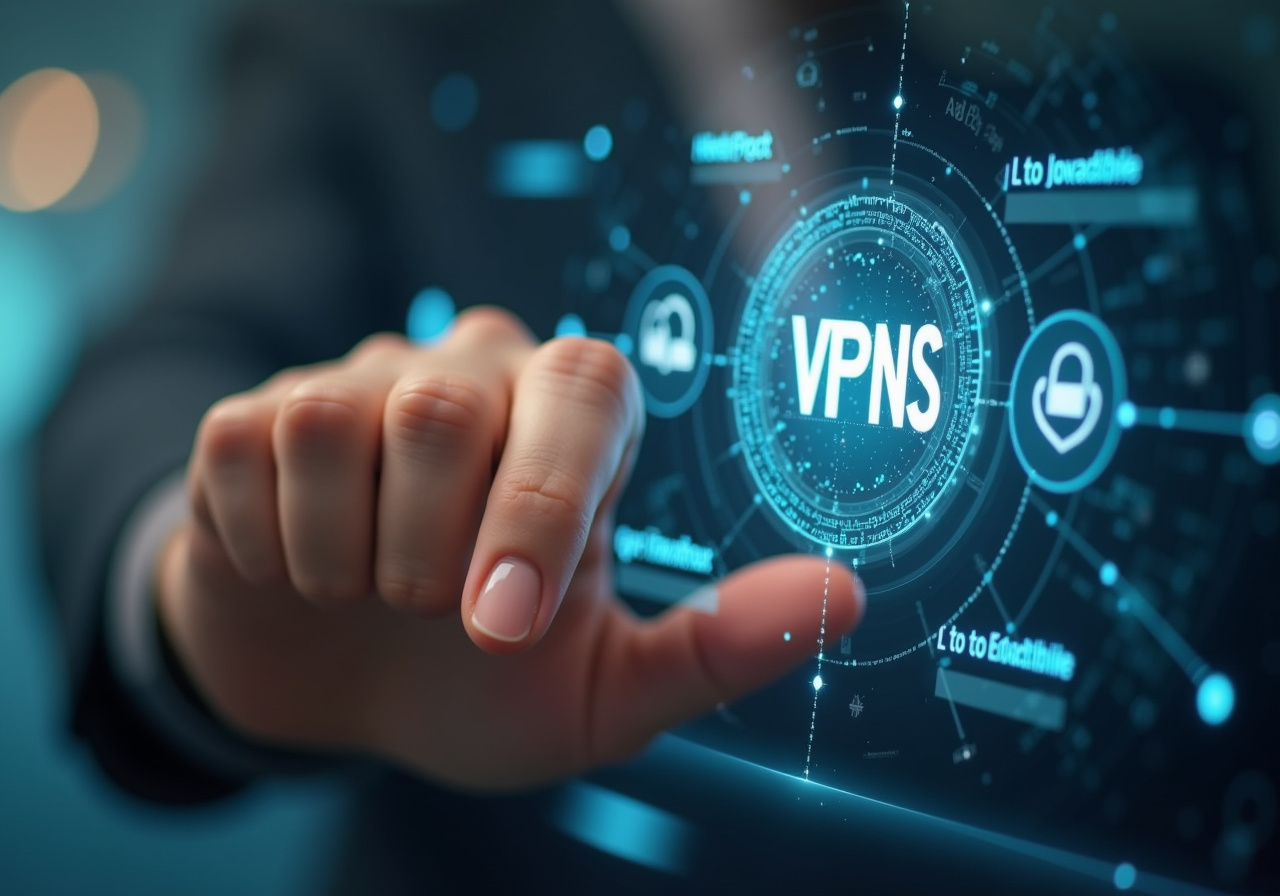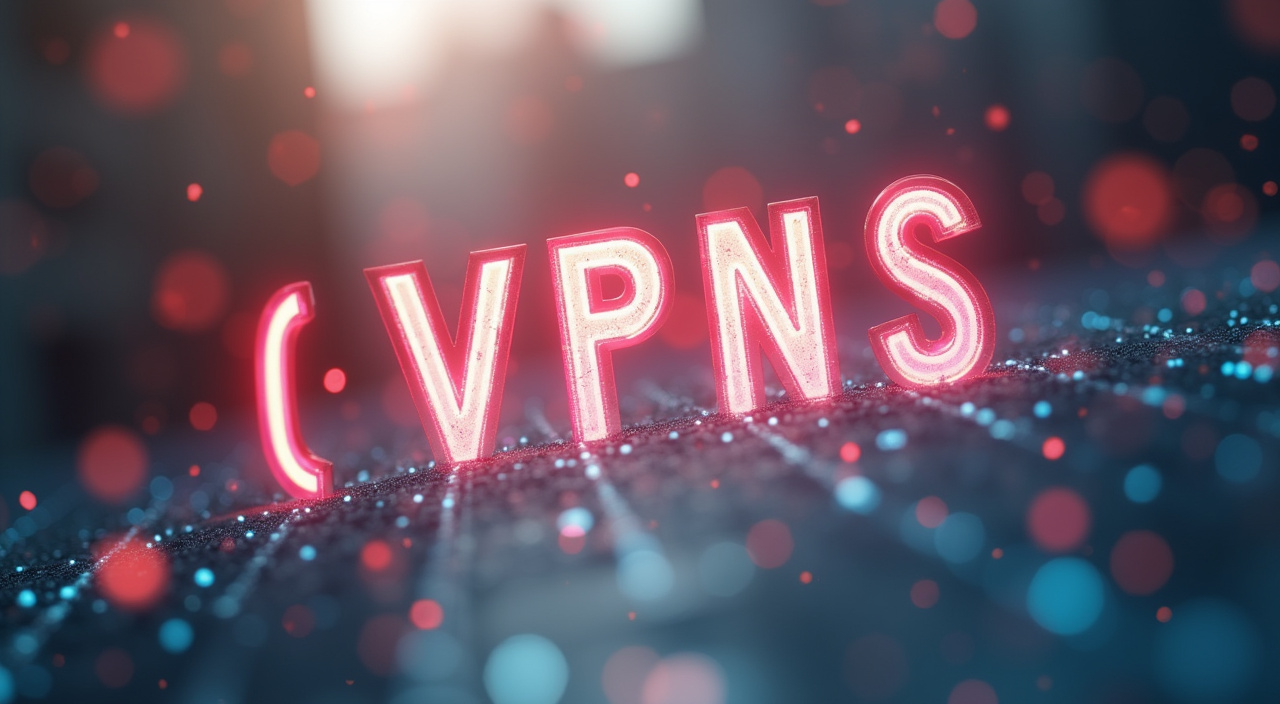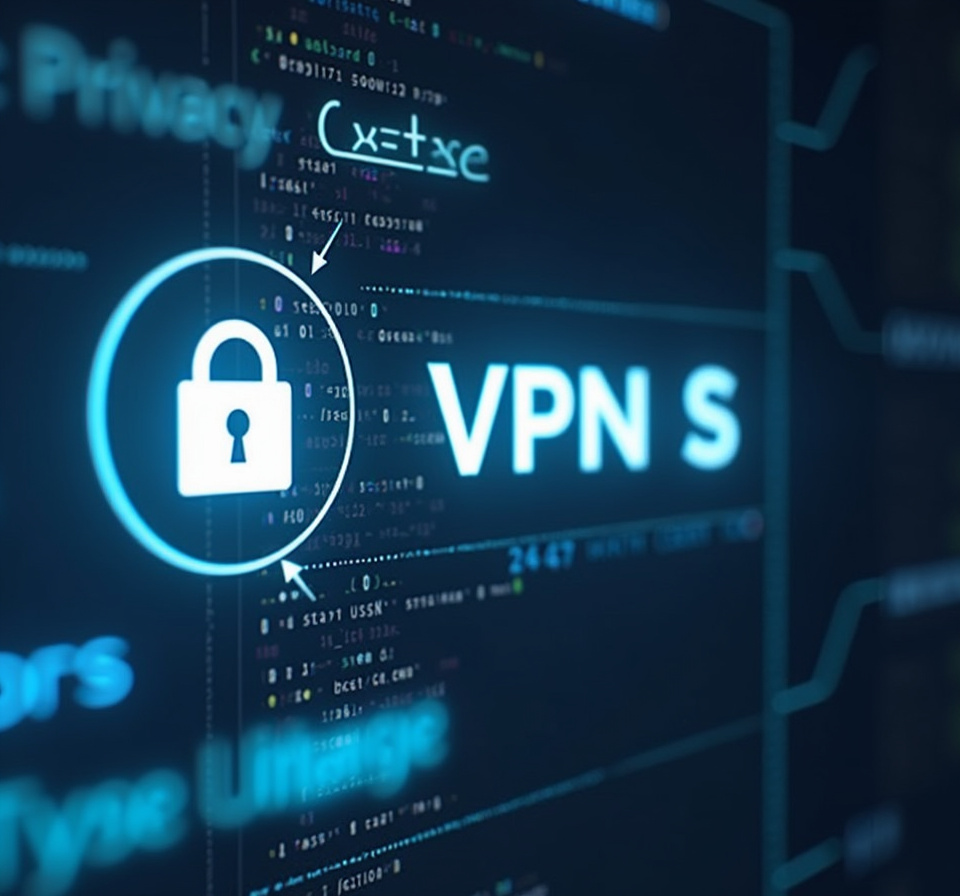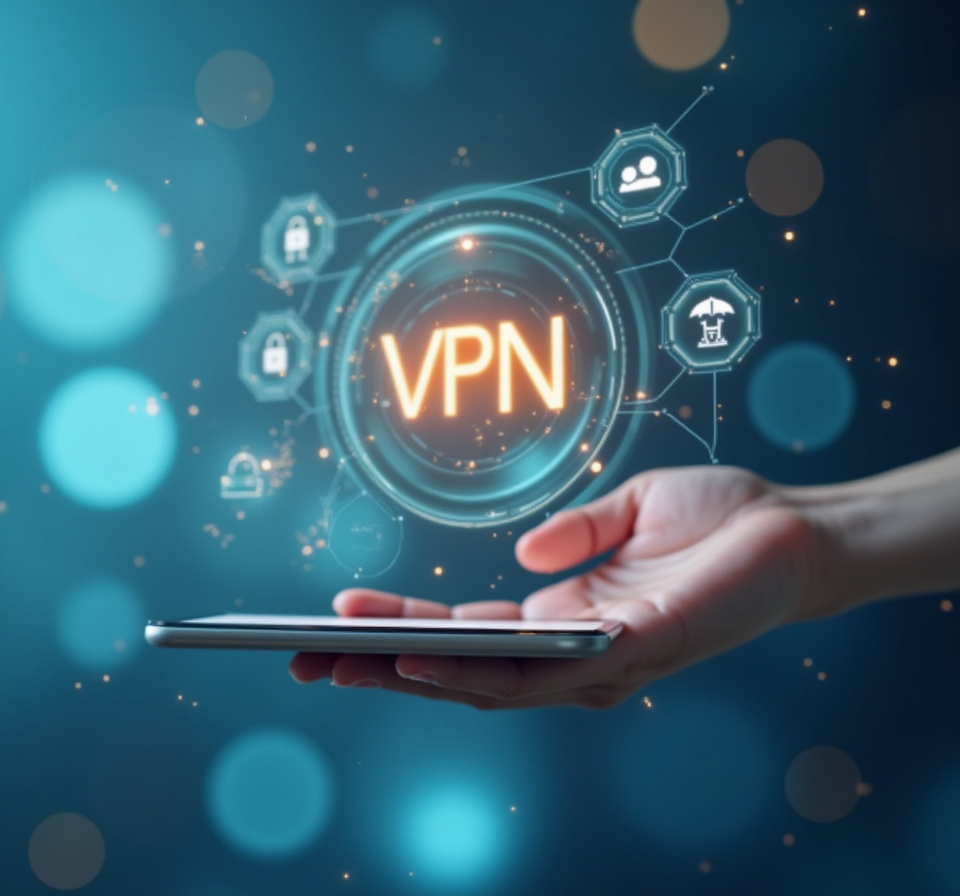VPN Accessibility for People with Disabilities
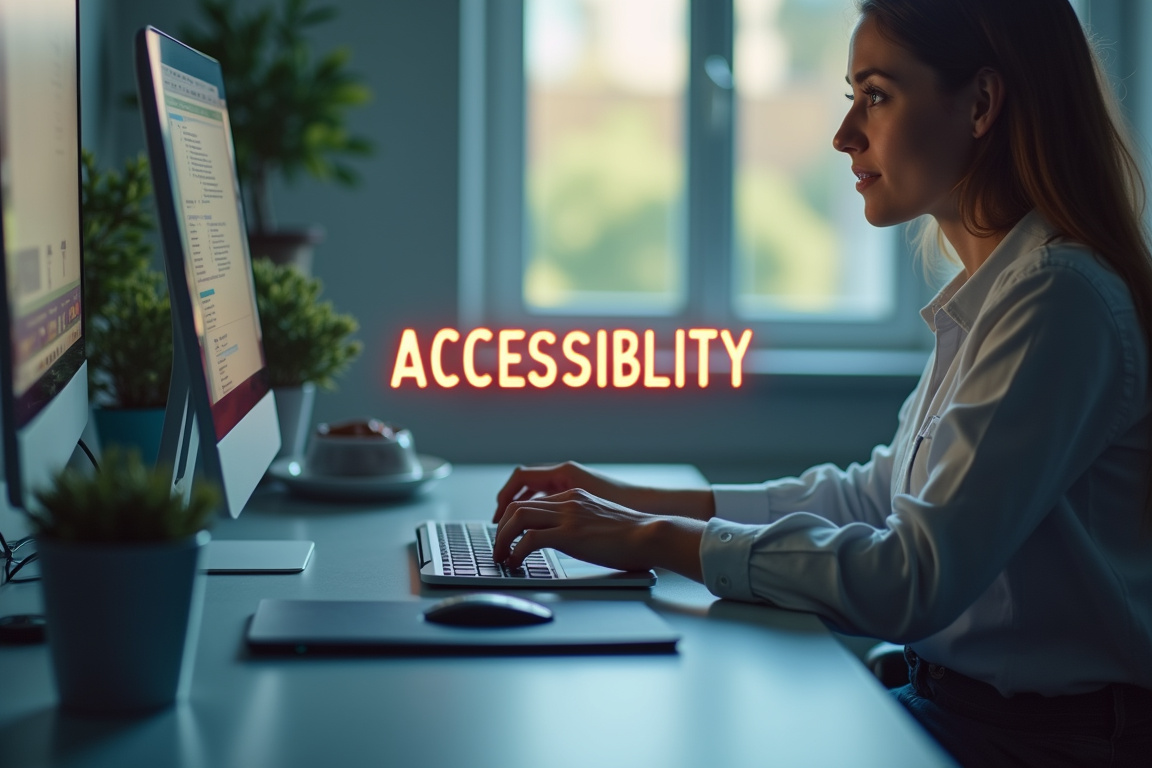
Table of Contents
VPN features
In today's digitally interconnected world, access to the internet has become as fundamental as access to electricity or clean water. It's the gateway to information, communication, education, employment, and countless other opportunities that shape our modern lives. However, for individuals with disabilities, navigating the online landscape can present a unique set of challenges.
Barriers can range from inaccessible website designs and confusing interfaces to a lack of assistive technology compatibility. In this context, VPNs, or Virtual Private Networks, emerge as a powerful tool for securing and enhancing the online experience, but their accessibility for people with disabilities often remains an overlooked consideration. This comprehensive guide aims to shed light on the critical importance of VPN accessibility, exploring the specific that can provide meaningful , thoroughly evaluating the current state of , and examining the proactive role of in fostering a more inclusive and equitable online environment through technology.
Our core belief is that the internet should be an open and accessible space for everyone, regardless of their physical, cognitive, or sensory abilities. This article provides an in-depth exploration of the key considerations and best practices for ensuring that VPNs are designed and implemented with accessibility in mind, ultimately contributing to a more inclusive and secure digital world for all. At its heart, a VPN creates a secure, encrypted tunnel for internet traffic, masking the user's IP address and protecting their data from prying eyes.
This is particularly crucial for individuals with disabilities who may face heightened vulnerability online. For example, someone using assistive technology, such as a screen reader, might unknowingly transmit sensitive information over an unsecured connection, making them susceptible to phishing attacks, data breaches, or even online harassment. A well-configured and accessible VPN acts as a digital shield, safeguarding their privacy and ensuring secure access to online resources.
However, the true essence of transcends mere functionality; it embodies the broader principle of digital inclusion. It guarantees that people with disabilities can fully realize the benefits of VPN technology – enhanced security, improved privacy, and unrestricted access to information – without encountering unnecessary obstacles or frustrating limitations. To achieve true and meaningful accessibility, VPN providers must adopt a holistic approach, carefully considering the diverse needs of individuals with a wide range of disabilities, including visual impairments, auditory impairments, cognitive disabilities, and motor impairments.
This requires incorporating adaptive interfaces that can be customized to individual preferences, ensuring seamless compatibility with screen readers and other assistive technologies, providing alternative input methods to accommodate motor impairments, and communicating information in a clear, concise, and easily understandable manner. Moreover, the level of offered by a VPN provider plays a vital role in promoting inclusivity and empowering users with disabilities. Providing comprehensive training materials in accessible formats, offering dedicated support channels staffed by accessibility experts, and actively soliciting feedback from the disabled community are all essential steps towards ensuring that everyone can use VPN technology effectively and confidently.
The commitment to comprehensive is paramount. This includes designing VPNs in a manner that empowers users with disabilities to fully participate in the online world while recognizing and addressing the systemic barriers that often hinder their engagement.
VPN accessibility
The fundamental advantages of using a VPN are twofold: enhanced security and increased privacy. For individuals with disabilities, these benefits are not merely desirable; they are often essential for navigating the online world safely and effectively. Imagine a visually impaired user relying on a screen reader to access online banking services.
Without a VPN, their financial information could be vulnerable to interception by malicious actors. Similarly, a person with a cognitive disability might struggle to identify and avoid phishing scams, making them particularly susceptible to online fraud. A VPN adds a crucial layer of protection, encrypting their data and masking their IP address, thereby minimizing the risk of falling victim to these threats.
Therefore, ensuring is not simply a matter of convenience; it's a matter of protecting vulnerable individuals from harm. To truly cater to the needs of users with disabilities, VPN providers must move beyond basic functionality and embrace inclusive design principles. This includes prioritizing compatibility with assistive technologies, such as screen readers, voice recognition software, and alternative input devices.
The user interface should be adaptable and customizable, allowing individuals to adjust font sizes, color schemes, and navigation layouts to suit their specific needs. Clear and concise instructions, presented in multiple formats (e.g., text, audio, video), are also essential for ensuring that everyone can understand and use the VPN effectively. Furthermore, should be designed with accessibility in mind from the outset.
For instance, features like automatic connection upon startup or one-click connect can simplify the process for users with motor impairments or cognitive disabilities. The availability of pre-configured profiles optimized for specific tasks (e.g., secure browsing, streaming, gaming) can also make it easier for users to tailor their VPN experience to their individual needs. Another critical aspect of accessibility is providing adequate .
This includes offering dedicated support channels staffed by trained accessibility experts who can assist users with disabilities in setting up and using the VPN. Support materials should be available in accessible formats, such as large print, Braille, or audio recordings. VPN providers should also actively solicit feedback from the disabled community to identify areas where their products and services can be improved.
This can be done through surveys, focus groups, or user testing sessions. By incorporating the perspectives of users with disabilities into the design and development process, VPN providers can ensure that their products are truly accessible and meet the real-world needs of this often-overlooked population. The goal is to create an that is not only functional but also empowering, allowing individuals with disabilities to confidently navigate the online world and participate fully in the digital economy.
Ultimately, the measure of a truly accessible VPN lies not just in its technical specifications, but in its ability to enhance the digital lives of all users, regardless of their abilities. A commitment to and proactive accessibility initiatives is not merely good business practice; it's a fundamental ethical responsibility.
VPN accessibility
One of the foremost critical facets of ensuring resides in the meticulous design and implementation of that are explicitly tailored to address the diverse needs of users with disabilities. For individuals grappling with visual impairments, seamless screen reader compatibility becomes an absolute necessity. VPN interfaces must be meticulously crafted in a manner that empowers screen readers to accurately interpret and effectively convey information to the user.
This entails the strategic incorporation of descriptive alt text for all images, the provision of impeccably clear and consistent navigation pathways, and the unwavering assurance that all interactive elements are comprehensively and appropriately labeled to facilitate intuitive understanding and interaction. Complementing these measures, customizable font sizes and thoughtfully designed high-contrast color schemes can substantially augment readability and visual clarity for users with low vision, significantly enhancing their overall user experience. Addressing the requirements of individuals with auditory impairments necessitates the provision of alternative communication modalities that transcend reliance solely on auditory cues.
This encompasses the proactive offering of text-based support options, exemplified by live chat functionalities and email correspondence channels, alongside the provision of meticulously transcribed transcripts or accurately synchronized captions for all audio and video content. Furthermore, the strategic deployment of visual cues, such as intuitively designed flashing notifications or meticulously crafted color-coded alerts, can prove invaluable in effectively conveying pertinent information to users with auditory sensitivities or limitations. Cognitive disabilities introduce a unique set of challenges when it comes to the seamless and intuitive utilization of VPN technology.
Overly complex interfaces, replete with technical jargon and convoluted instructions, can inadvertently create formidable barriers to accessibility and comprehension. To mitigate these challenges, VPN providers should prioritize the simplification of their interfaces, adhering to the principles of clear and concise language, and furnishing step-by-step instructions accompanied by thoughtfully incorporated visual aids to enhance clarity and understanding. Complementing these measures, the provision of options for customizing the interface, such as the ability to conceal advanced features or streamline settings, can prove highly beneficial in empowering users to tailor the VPN experience to their individual cognitive processing capabilities.
In catering to individuals with motor impairments, the implementation of seamless keyboard-only navigation becomes paramount. VPN interfaces should be meticulously designed to enable users to access all features and functions using solely a keyboard or other assistive input devices, thereby eliminating reliance on mouse-based interactions. This necessitates the provision of a demonstrably clear and logically structured tab order, alongside the unwavering assurance that all interactive elements are readily accessible via keyboard input.
Furthermore, the incorporation of voice control compatibility can represent a valuable and empowering accessibility enhancement, enabling users to interact with the VPN through voice commands. Beyond the mere incorporation of accessible design principles, the provision of robust and comprehensive is essential. This entails proactive engagement with the disabled community, actively soliciting feedback on existing accessibility features, and demonstrating an unwavering commitment to continuously improving the user experience based on user insights.
This perpetual commitment to iterative improvement serves as a defining characteristic of an . In essence, the creation of an is not merely a technical undertaking; it represents a profound commitment to inclusivity, empowerment, and the unwavering belief that everyone deserves equal access to the benefits and opportunities of the digital age. This commitment extends to proactive measures.
user assistance
Effective forms the cornerstone of ensuring that VPNs are not merely technically accessible but are also genuinely usable and empowering for individuals with disabilities. This encompasses a multifaceted approach that includes providing clear and comprehensive documentation in accessible formats, offering dedicated support channels specifically tailored to the needs of users with disabilities, and actively soliciting feedback from the disabled community to continuously refine and enhance accessibility features. Documentation should be readily available in a variety of formats to cater to diverse user preferences and accessibility requirements.
This includes offering documentation in easily accessible HTML format, plain text format for screen reader compatibility, and accessible PDF format that adheres to accessibility standards. The language used in documentation should be clear, concise, and free of technical jargon, ensuring that individuals with varying levels of technical expertise can easily understand and follow the instructions. Visual aids, such as screenshots, diagrams, and video tutorials, can also be invaluable in illustrating complex concepts and guiding users through the setup and configuration process.
Dedicated support channels for users with disabilities are essential for providing personalized assistance and addressing specific accessibility-related concerns. This might include a dedicated phone line staffed by accessibility specialists, an email address specifically for accessibility inquiries, or a live chat service where users can receive real-time support. It is crucial that these support channels are staffed by individuals who are thoroughly trained in accessibility best practices and who possess a deep understanding of the challenges faced by users with disabilities.
Furthermore, these support channels should be readily available during standard business hours, and response times should be prompt and efficient. Actively soliciting feedback from the disabled community is critical for identifying areas where can be further improved. This can be achieved through various methods, such as conducting regular surveys, organizing focus groups, and conducting user testing sessions with individuals with disabilities.
By directly engaging with users and listening to their experiences and perspectives, VPN providers can gain invaluable insights into the challenges they face and develop targeted solutions that effectively address their specific needs. Beyond providing technical support, can encompass a range of other supportive measures designed to enhance the user experience for individuals with disabilities. For example, some VPN providers offer personalized training or onboarding sessions to help new users with disabilities get started and learn how to effectively use the VPN.
Others may partner with disability organizations to provide discounted or free VPN access to individuals who meet certain eligibility criteria. Such initiatives not only promote digital inclusion but also demonstrate the VPN provider's commitment to social responsibility and accessibility. In addition, VPN providers should strive to be transparent about their accessibility efforts.
This includes publishing a comprehensive accessibility statement on their website that clearly outlines the accessibility features offered, details the provider's commitment to ongoing improvement, and provides contact information for accessibility-related inquiries. This level of transparency builds trust and fosters a strong relationship with the disabled community, encouraging more individuals to engage with the VPN provider's products and services. By prioritizing user education, providing dedicated support, and actively soliciting feedback, VPN providers can ensure that their solutions are truly effective and empowering for all users, regardless of their abilities.
Ultimately, this commitment to proactive not only benefits individuals with disabilities but also enhances the overall user experience for everyone.
VPN accessibility
In conclusion, the journey towards achieving comprehensive for people with disabilities is an ongoing process that requires sustained commitment, proactive collaboration, and a deep understanding of the diverse needs of this often-overlooked population. It's not merely about adding a few accessibility features as an afterthought; it's about integrating accessibility into every stage of the design, development, and support process. By prioritizing inclusive design, providing robust , and fostering a culture of continuous improvement, VPN providers can truly empower individuals with disabilities to fully participate in the digital world.
The incorporation of accessible is paramount. This includes ensuring compatibility with assistive technologies like screen readers and voice recognition software, offering customizable interfaces with adjustable font sizes and high-contrast color schemes, and providing alternative input methods for users with motor impairments. These features are not simply add-ons; they are essential components that enable individuals with disabilities to effectively use VPNs to protect their online privacy and security.
However, accessibility extends beyond technical features. It also encompasses the provision of clear and comprehensive documentation in accessible formats, dedicated support channels staffed by accessibility experts, and active engagement with the disability community to solicit feedback and identify areas for improvement. This holistic approach to ensures that individuals with disabilities have the resources and support they need to navigate the complexities of VPN technology and maximize its benefits.
Ultimately, the true measure of an is its ability to enhance the digital lives of all users, regardless of their abilities. It's about creating a level playing field where everyone can access information, communicate with others, and participate in online activities without facing unnecessary barriers or limitations. This requires a shift in mindset, from viewing accessibility as a compliance issue to recognizing it as an opportunity to create more inclusive and user-friendly products and services.
VPN providers who embrace this mindset will not only benefit individuals with disabilities but will also gain a competitive advantage in the marketplace. As the digital world becomes increasingly essential for daily life, ensuring accessibility for all is not just a matter of social responsibility; it's a matter of economic imperative. By investing in accessibility, VPN providers can tap into a vast and growing market of users with disabilities, while also enhancing their brand reputation and attracting socially conscious customers.
The path forward requires ongoing collaboration between VPN providers, disability organizations, and government agencies. This collaboration can help to establish clear accessibility standards, develop best practices, and promote awareness of the importance of digital inclusion. By working together, we can create a more accessible and equitable online world for everyone.
In the end, the pursuit of VPN accessibility is a reflection of our values as a society. It's about ensuring that everyone has the opportunity to thrive in the digital age, regardless of their abilities. By embracing accessibility, we can create a more inclusive, equitable, and just online world for all.
The proactive promotion of ensures a more inclusive internet experience.
Stay Updated
Get the latest VPN news, tips, and exclusive deals to your inbox.
